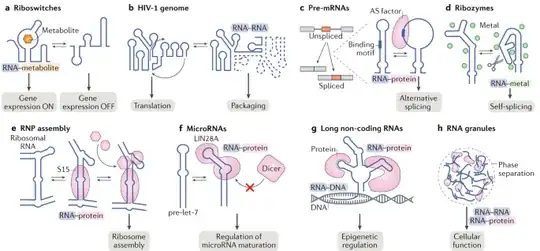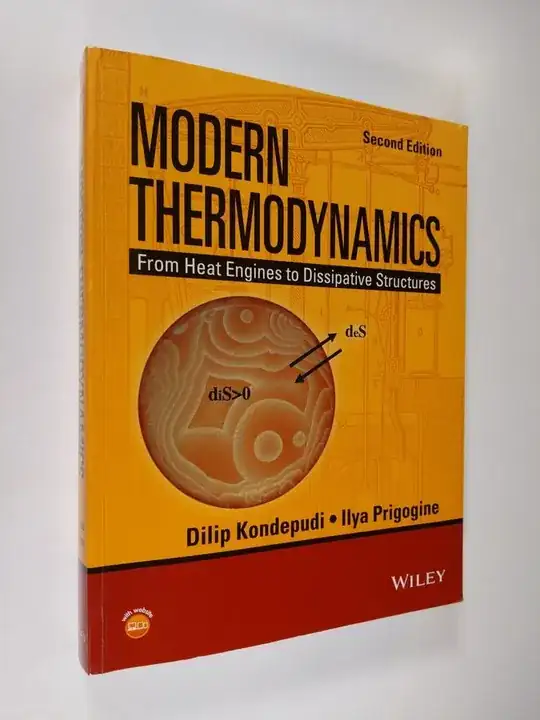It is a pleasure and pride to defend Prigogine and non-equilibrium thermodynamics here. In fact, thermodynamics is totally contrary to the predominant scientific ideology, which understands, on a Platonic basis, that the world can come into harmonious functioning. This is why Newtonian physics arises from the explanation of celestial bodies, where the speeds of transformation are completely outside the human range of observation. From the point of view of thermodynamics, a perfect movement is also perfectly useless, it generates nothing, it is a foreign concept to the placid observation of the "eternal" movements of the stars. It is also the origin of the stubborn belief that it would be possible to create perpetual motion machines.
If what we call life on Earth were in balance, it would not depend on a gigantic and continuous source of energy from the Sun. One would imagine that if the sun were turned off, this balance would persist.
For thermodynamics, there is no true equilibrium other than death. This is a stable and final equilibrium. I don't even say "non-equilibrium thermodynamics", but real world thermodynamics, where life perishes and only survives at the expense of other forms of life or the energy of the Sun.
Is there a theory of dissipative structures comparable to that of equilibrium structures?
Of course, there is.
In open systems, such as those that support life, energy is constantly introduced to maintain them and it would not make sense to try to explain them by maximizing entropy, but rather by minimizing entropy production, which is the equivalent of principle of maximizing entropy in equilibrium. Once we stop introducing energy and let the system "die", or due to some disturbance the system is unable to maintain dynamic equilibrium, it begins to seek the maximization of entropy: death.
If we take a certain control volume in the world (for example, a cell), we have points where the temperatures are different, the concentrations (or rather, the chemical potentials determined by these concentrations) of the countless chemical species are different, and the quantities of movement are different.
Each of these gradients causes a flow $\bold{J}$. Equilibrium entropy also has to be taken into account, it is a property of matter. The non-equilibrium entropy is greater than this, given by the sum of the equilibrium entropy and that generated by the flows, by the transfer phenomena:
Entropy Production and Fluxes
In non-equilibrium thermodynamics, the local entropy production $\sigma$ is related to irreversible processes occurring within the system. It can be expressed as the sum of products of fluxes and their corresponding thermodynamic forces (gradients of potentials). The general form for entropy production is:
$$ \sigma = \sum_k \mathbf{J}_k \cdot \nabla \left( \frac{\mu_k}{T} \right) + \mathbf{J}_q \cdot \nabla \left( \frac{1}{T} \right) + \sum_{ij} \mathbf{J}_{ij} \cdot \nabla v_{ij} $$
where:
- $\mathbf{J}_k$ is the flux of the $k$-th species.
- $\mu_k$ is the chemical potential of the $k$-th species.
- $T$ is the temperature.
- $\mathbf{J}_q$ is the heat flux.
- $v_{ij}$ is the velocity component (momentum).
- $\mathbf{J}_{ij}$ is the corresponding flux of momentum.
Detailed Entropy Balance Equation
The detailed entropy balance equation, considering the gradients of the concentrations and other thermodynamic potentials, is:
$$ \frac{\partial S}{\partial t} + \nabla \cdot \mathbf{J}_S = \sigma $$
where:
- $\frac{\partial S}{\partial t}$ is the local rate of change of entropy.
- $\mathbf{J}_S$ is the entropy flux.
- $\sigma$ is the local entropy production rate.
Entropy Flux and Entropy Production
The entropy flux $\mathbf{J}_S$ can be related to the fluxes of energy, matter, and momentum. For example:
$$ \mathbf{J}_S = \frac{\mathbf{J}_q}{T} + \sum_k \frac{\mu_k \mathbf{J}_k}{T} + \sum_{ij} \frac{\mathbf{J}_{ij}}{T} $$
The entropy production term $\sigma$ is then given by:
$$ \sigma = \sum_k \mathbf{J}_k \cdot \nabla \left( \frac{\mu_k}{T} \right) + \mathbf{J}_q \cdot \nabla \left( \frac{1}{T} \right) + \sum_{ij} \mathbf{J}_{ij} \cdot \nabla v_{ij} $$
In this form:
- The first term represents the entropy production due to the diffusion of species $k$ driven by the gradient of the chemical potential.
- The second term represents the entropy production due to heat conduction driven by the temperature gradient.
- The third term represents the entropy production due to viscous dissipation or momentum transfer.
Incorporating Concentration Gradients
For the specific case of concentration gradients, the flux of species $k$ can be written as:
$$ \mathbf{J}_k = -D_k \nabla c_k $$
where $D_k$ is the diffusion coefficient and $c_k$ is the concentration of species $k$. The chemical potential gradient $\nabla \mu_k$ is related to the concentration gradient $\nabla c_k$.
Complete Entropy Production Equation
Combining these elements, the entropy production $\sigma$ incorporating the concentration gradients can be written as:
$$ \sigma = \sum_k \left( -D_k \nabla c_k \right) \cdot \nabla \left( \frac{\mu_k}{T} \right) + \mathbf{J}_q \cdot \nabla \left( \frac{1}{T} \right) + \sum_{ij} \mathbf{J}_{ij} \cdot \nabla v_{ij} $$
This form emphasizes that the entropy production is due to the irreversible fluxes driven by their respective thermodynamic forces (gradients of chemical potential, temperature, and velocity).
So what is the equivalent theory for non-equilíbrium?
Let's make this short, it is the minimization of $\sigma$ in the very same terms of the minimization of action in Lagrangian physics. The concept of entropy production $\sigma$ in non-equilibrium thermodynamics and the minimization of action in Lagrangian mechanics both deal with the evolution of systems towards states of extremal properties, but they are rooted in different physical principles and mathematical formalisms. However, there are some conceptual parallels and frameworks that can connect these ideas.
Entropy Production Minimization
In non-equilibrium thermodynamics, the principle of minimum entropy production applies to systems close to equilibrium, as formulated by Prigogine. According to this principle, a system not in equilibrium but near it will evolve in such a way that the rate of entropy production $\sigma$ is minimized. This is particularly relevant for steady-state processes.
Principle of Least Action
In classical mechanics, the principle of least action states that the path taken by a system between two states is the one for which the action $S$ is minimized. The action $S$ is defined as the integral of the Lagrangian $L$ over time:
$$ S = \int L \, dt $$
where the Lagrangian $L$ is typically $L = T - V$ (the difference between kinetic energy $T$ and potential energy $V$).
Connecting the Concepts
While the principles of entropy production and least action operate in different domains (thermodynamics vs. mechanics), there are ways to draw analogies and even formal connections between them:
Extremal Principles: Both principles involve finding an extremum (minimum or stationary point) of a certain quantity:
- Entropy Production: Minimized in steady-state near-equilibrium processes.
- Action: Minimized in the actual path taken by a system in classical mechanics.
Variational Approach: Both can be framed in terms of variational principles:
- Entropy Production: The system evolves such that the functional representing entropy production is minimized.
- Action: The system follows a path that minimizes the action functional.
Non-Equilibrium Thermodynamics and Action Principles: Some advanced theoretical frameworks attempt to extend the principle of least action to non-equilibrium thermodynamics. This involves defining an appropriate "thermodynamic action" that incorporates entropy production and other thermodynamic potentials.
Thermodynamic Action
To draw a more formal analogy, one could define a "thermodynamic action" $S_{\text{thermo}}$ that accounts for entropy production:
$$ S_{\text{thermo}} = \int (\text{Thermodynamic Lagrangian}) \, dt $$
where the Thermodynamic Lagrangian could involve terms related to entropy, internal energy, and other relevant potentials.
For example, one might define:
$$ S_{\text{thermo}} = \int \left( \sigma - \frac{\partial S}{\partial t} - \nabla \cdot \mathbf{J}_S \right) dt $$
Here, the goal would be to find the path or evolution of the system that extremizes this thermodynamic action, analogous to how one finds the path in mechanics that extremizes the classical action.
Would you like to get rid of the notion of teleology in biology?
 The roles of structural dynamics in the cellular functions of RNAs. Nature Reviews Molecular Cell Biology. Ganser et al. 10 June 2019
The roles of structural dynamics in the cellular functions of RNAs. Nature Reviews Molecular Cell Biology. Ganser et al. 10 June 2019
When we read James Crick's first writings on RNA and DNA, it is impossible not to notice the immense embarrassment with which he says that he is not exactly suggesting, but everything happens as if one molecule took another and took it to the right place to produce a protein that was sent to the place where it should work.
How do these molecules "decide" to travel against the concentration gradient to sustain life? The explanation is in these equations. What drives the system is not the gradient, as we usually think, but the total sum of these generations of entropy, and the result is... life.
Onsanger relations and beyond
Now, there are much more important results if we can assume that, at least within certain regions, we can understand the relationships of these flows as linear. Hence we have the Onsanger relations, etc. But the fundamental basis of explanation does not depend on Onsanger relations or linearity, but rather on pure non-equilibrium thermodynamics.
Unfortunately, the text is already too long, but it would be great pleasure to talk about these extensions and the fundamental concepts above.
Basic Bibliography
For avoiding "hundreds of books", pick just one:
Dilip Kondepudi and Ilya Prigogine, "Modern Thermodynamics", Second Edition, Wiley, 215.


